Step 1: Complete the American Heart Association online course.
Step 2: Perform skills testing in San Francisco or another location.
Step 3: Receive the American Heart Association card same day.
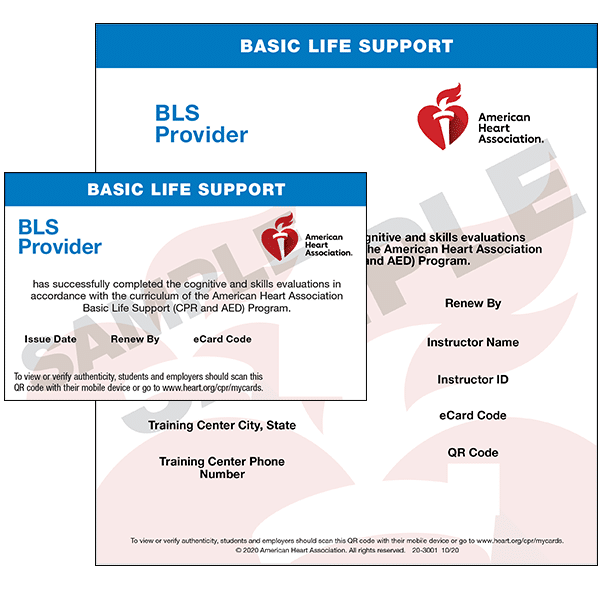
Basic Life Support
Online Course: 1-2 hours
Skills Testing: 30 minutes
100% Pass Rate Guaranteed
Lowest Price In San Francisco
Receive Card On Class Day
Thousands of 5 Star Reviews
CE Credits to CA Dentists
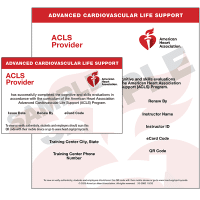
Advanced Cardiac Life Support
Online Course: 2-3 hours
Skills Testing: 30 minutes
100% Pass Rate Guaranteed
Lowest Price In San Francisco
Receive Card On Class Day
Thousands of 5 Star Reviews
Some Professions: 2-3 CEU
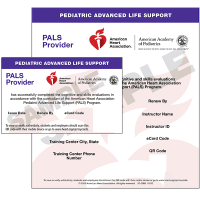
Pediatric Advanced Life Support
Online Course: 2-3 hours
Skills Testing: 30 minutes
100% Pass Rate Guaranteed
Lowest Price In San Francisco
Receive Card On Class Day
Thousands of 5 Star Reviews
Some Professions: 3.75-5 CEU
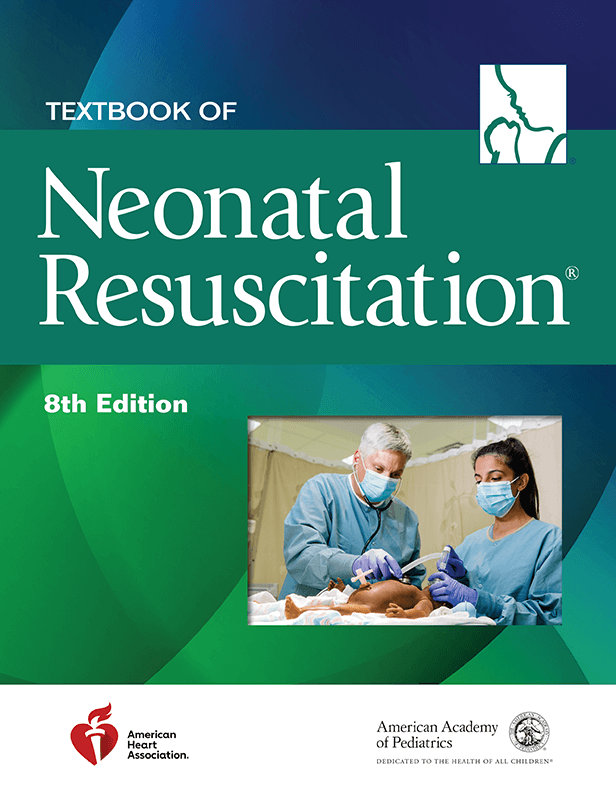
Neonatal Resuscitation Program
Online Course: 2-3 hours
Skills Testing: 3 hours
100% Pass Rate Guaranteed
Lowest Price In San Francisco
Receive Card On Class Day
Thousands of 5 Star Reviews
Some Professions: 4 CEU
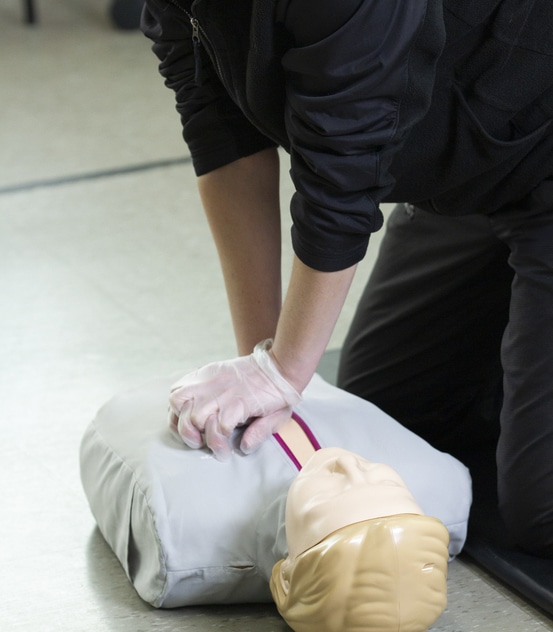
Audience: General public
Topics: CPR for all age groups, AED use, bleeding, epi-pen, etc
Online Session: 1 Hour
Skills Testing: 30 minutes
Card: Safety Training Seminars
Certification: Valid 2 years
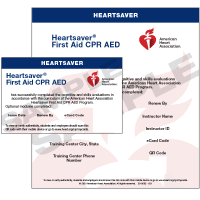
Audience: General public
Topics: CPR for all age groups, AED use, bleeding, epi-pen, etc
AHA Online Course: 1-2 Hours
Skills Testing: 30-45 minutes
Card: American Heart Association
Certification: Valid 2 years
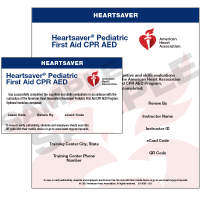
Audience: Childcare providers
Topics: CPR for all age groups, AED use, bleeding, epi-pen, etc
AHA Online Course: 1-2 Hours
Skills Testing: 30-45 minutes
Card: American Heart Association
Certification: Valid 2 years

Audience: Childcare providers
Topics: Lead poisoning, nutrition, infectious disease,etc
Zoom Course: 8 Hrs (state law)
Skills Testing: 30-45 minutes
Card: EMSA Health & Safety
Certification: No expiration
EXCELLENTTrustindex verifies that the original source of the review is Google. The BLS class at Safety Training Seminars provided me with a comprehensive and engaging educational experience, allowing me to gain confidence and skills in performing CPR and managing cardiac emergencies while also achieving my Bls certification. The instructor's expert guidance and hands-on instruction ensured that I left feeling well-prepared and prepared to respond effectively in a variety of situations. I appreciated it greatly as I tried until I got it right.Trustindex verifies that the original source of the review is Google. Videos and online learning was easy to do and thorough. The mannequin experience was helpful with immediate feedback and confidence buildingTrustindex verifies that the original source of the review is Google. Instructions were clear, facilitator was kind and helpful, all materials were provided which made it easy even while it’s virtual.Trustindex verifies that the original source of the review is Google. I had a valuable experience in obtaining my CPR and BLS certification. They were super helpful in making sure I complete my online portion before my inperson training. Please give yourself enough time to do the online training before the person training sessionTrustindex verifies that the original source of the review is Google. I found out on Thursday afternoon I needed a hands on CPR course to start my nee job on Monday. I looked this place up and found out a testing place was about a mile away. I was able to complete the online portion that evening and go to the in person portion early the next day. By 9 am I had my card to send to my employer! So convenient and easy to use. I cannot recommend this service more highly!Trustindex verifies that the original source of the review is Google. Very clean and easy to access classroom. Instructions before class and during class were always available and easy to understand! Great experience- will definitely use again.Trustindex verifies that the original source of the review is Google. The ACLS course offered by Safety Training Seminars was incredibly informative and engaging, leaving me feeling confident and prepared in my skills and knowledge to respond to emergencies, especially with my new CPB and BLS certifications in hand. I have taken this course for the last 3 cycles of my ACLS renewal and I am always pleased. Will definitely be back in 2027!Trustindex verifies that the original source of the review is Google. Great place to get your BLS cert! I've used them twice now for skills sessions with the Voice Assisted Manikins (VAM). I learned more here than I have elsewhere with live instructors. You get real-time data on your compression rate, depth, and positioning. Same with the rescue breaths. They're also very quick to respond to email and phone calls. Overall fantastic experience!Trustindex verifies that the original source of the review is Google. The process was straight forward. I felt it may have been best to include more hands on skills for ACLS purposes, but obtaining my certificate was simple.Trustindex verifies that the original source of the review is Google. I messed up my exam time and they were very accommodating and I was able to complete my training despite my misunderstanding. Very professional and would renew with them in a heartbeat.
Nob Hill
2000 Van Ness Avenue, Suite 303, San Francisco, CA 94109
View CPR, BLS, ACLS, PALS & First-aid Classes in San Francisco (Nob Hill)
Bayshore
1485 Bayshore Blvd, Suite 377, San Francisco, CA 94124
View CPR, BLS, ACLS, PALS & First-aid Classes in San Francisco (Bayshore)
Mission Bay
350 Townsend, Suite 426, San Francisco, CA 94107
View CPR, BLS, ACLS, PALS & First-aid Classes in San Francisco (Mission Bay)
Sunset
1951 Taraval Street, San Francisco, CA 94116
View CPR, BLS, ACLS, PALS & First-aid Classes in San Francisco (Sunset)
Get Certified with the American Heart Association RQI Program
The American Heart Association’s Resuscitation Quality Improvement (RQI) program is the fastest and most efficient way for medical and healthcare professionals in San Francisco to earn their official BLS, ACLS, and PALS certification.
Get certified quickly and conveniently with the latest in resuscitation training technology!
Safety Training Seminars CPR – Trusted Since 1989
About Us
Founded in 1989, Safety Training Seminars CPR is a woman-owned American Heart Association (AHA) Training Center dedicated to providing top-quality BLS, ACLS, PALS, CPR, and First Aid courses in San Francisco, CA.
✅ Exceptional Customer Support
Our friendly customer service team is available every day from 8 AM – 10 PM, including weekends, to assist with any questions or bookings.
✅ Daily Classes in Over 60 Cities
For your convenience, we offer AHA certification courses every day in San Francisco and surrounding areas.
✅ Official AHA Certification
Upon course completion, students receive their official American Heart Association certification card, valid for two years.
✅ Lowest Price Guarantee
We offer the most affordable rates in San Francisco County, backed by our Low Price Guarantee.
Join us today and get certified with the best in the business!
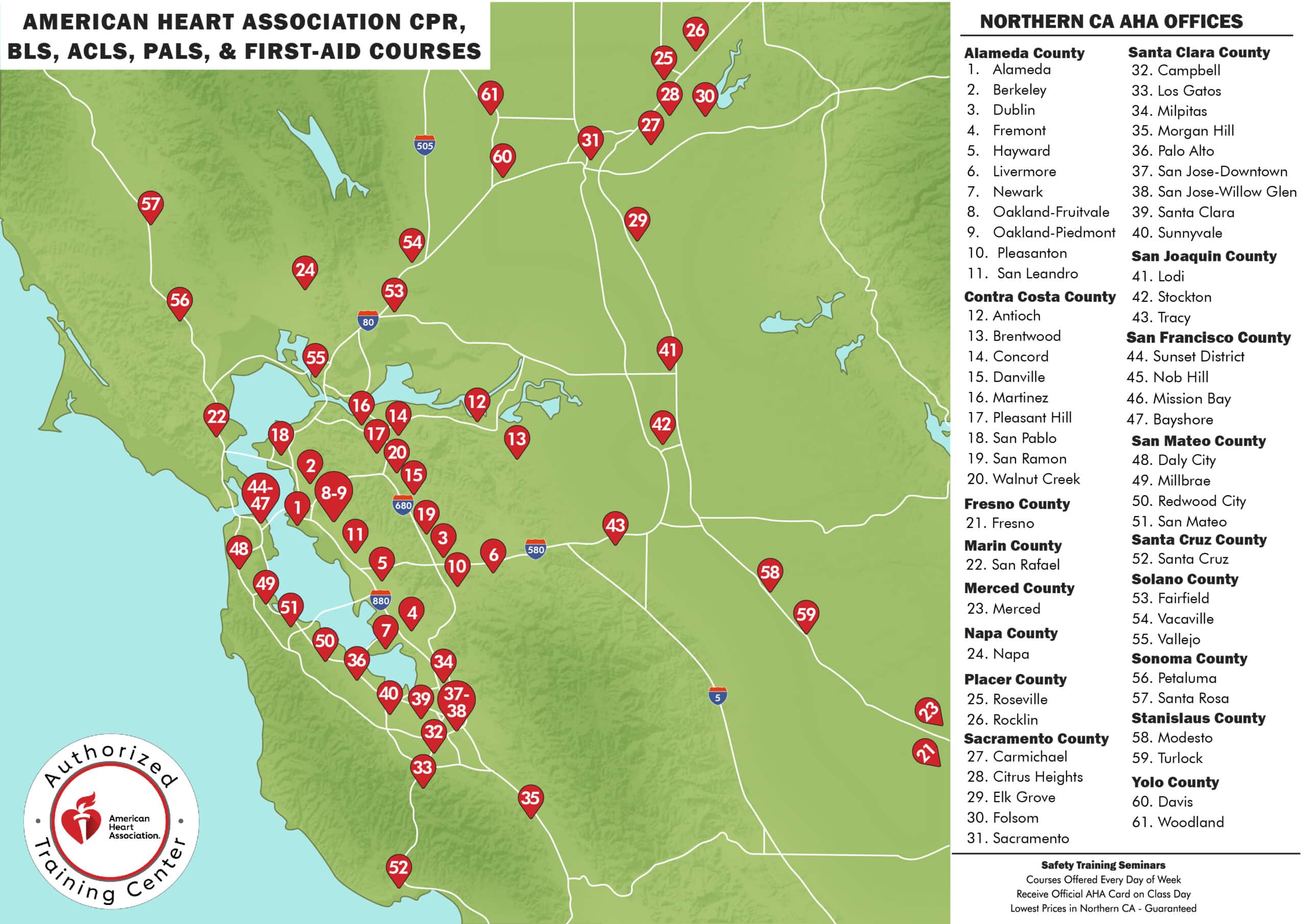
Emergencies happen without warning. Whether it’s a cardiac arrest, a choking child, or a severe injury, knowing how to respond can mean the difference between life and death. The American Heart Association offers world-renowned CPR, First Aid, BLS, ACLS, and PALS certification courses that provide critical training to equip individuals of all backgrounds to save lives.
If you’re in San Francisco, CA, these AHA courses are your ticket to gaining lifesaving skills, meeting work requirements, or simply feeling prepared for the unexpected.
When it comes to lifesaving training, quality matters. Here’s why certifications from the American Heart Association stand out:
The American Heart Association is a globally respected leader in cardiovascular science and emergency response training. Their programs are evidence-based and developed with input from medical professionals and researchers, ensuring you receive the best education.
An AHA certification is trusted across industries like healthcare, education, and corporate safety programs. Whether you’re a doctor, teacher, or parent, these certifications meet industry standards and are often required in professional settings.
AHA training gives you the confidence to act calmly and effectively in emergencies. You’ll learn practical techniques for CPR, injury management, and using equipment like AEDs, skills that can literally save lives.
The American Heart Association offers a variety of courses tailored for different audiences. Here’s a breakdown of what each program offers:
The CPR and First Aid course is the perfect starting point for anyone interested in lifesaving training. It’s designed for both laypersons and professionals.
What You’ll Learn:
Who It’s For:
Teachers, coaches, corporate employees, parents, and anyone in the general public.
BLS training is ideal for healthcare professionals or individuals requiring in-depth CPR training as part of their job.
What You’ll Learn:
Who It’s For:
Nurses, EMTs, first responders, and medical students.
The ACLS course is tailored to advanced medical professionals working in cardiac care and emergency medicine.
What You’ll Learn:
Who It’s For:
Paramedics, physicians, and critical care staff.
If your focus is on pediatric emergencies, the PALS course is essential.
What You’ll Learn:
Who It’s For:
Pediatricians, paramedics, and childcare providers.
AHA courses are about more than theory. They include practical, hands-on sessions using life-like manikins and real-world simulations. This ensures you leave each class ready to act.
Whether you’re building a healthcare career or adding valuable skills to your resume, AHA certifications are highly regarded by employers.
Busy San Francisco professionals can benefit from flexible scheduling, including evening or weekend classes and blended learning options (online theory combined with in-person practice).
Knowing what to do in an emergency gives you peace of mind. You’ll walk away from these courses feeling prepared and confident in your abilities.
Wondering what it’s like to attend an AHA class in San Francisco? Here’s what you can expect:
The truth is, everyone can benefit from these courses. Here are some specific groups who should consider signing up:
Finding the right AHA-certified course is simple. Here’s how:
Picture this—you’re in the middle of a crisis, but instead of panicking, you know exactly what to do. That’s the power of AHA training. Whether it’s for your career, your loved ones, or simply your peace of mind, these certification courses could be one of the most important investments you’ll make.
Start your lifesaving journey today. Enroll in an American Heart Association training class in San Francisco, CA, and gain invaluable skills for emergencies!
Safety Training Seminars CPR
2000 Van Ness Avenue, Suite 303, San Francisco, CA 94109
(415) 761-1988